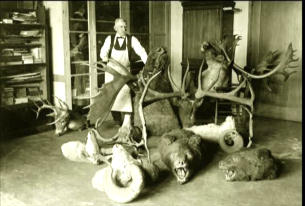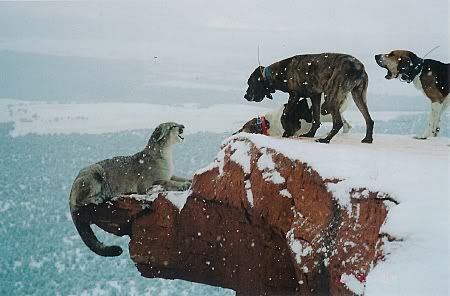

 The Accurate Reloading Forums
The Accurate Reloading Forums  THE ACCURATE RELOADING.COM FORUMS
THE ACCURATE RELOADING.COM FORUMS  Hunting
Hunting  Taxidermy
Taxidermy  Salted Hides
Salted HidesGo  | New  | Find  | Notify  | Tools  | Reply  |  |
| one of us |
Provided that they are stored in a dry, bug free enviroment, how long will a salted, dried hide from africa last before tanning. I have heard every where from a few months to infinity. "There always seems to be a big market for making the clear, complex." | ||
|
| One of Us |
My taxidermist once told me that if you freeze them that they could possibly last for a lifetime. Good Hunting,  | |||
|
| One of Us |
The short answer to your question is: I do not know. They should last for a long time. I have seen capes that were store in this condition for three years that were fine. However, I do not think that storing them for a long time in this condition is the best choice. Raw, dry salted skins are not normally stored in a freezer. This may cause some problems with them not freezing or becoming freezer burned which could lead to them not rehydrating properly.. I am of the opinion that you are better off by tanning the skins as soon as possible. Tan them first, then freeze. If they are for taxidermy purposes, have them wet tanned by a good tannery, wrap them tightly in a plastic bag, label and freeze. Tanned capes take up less than half the room of dry salted capes. Some capes may have codition problems that will only be discovered when they are reydrated before tanning. Why store a folded up salted cape for years that may be trash. Tanning is a very small part of the cost compared to the hunt/shipping/taxidermy etc.. I hope that helps. Feel free to PM me if you have any questions. | |||
|
| One of Us |
My wife made a rug on a blackbear hide that was salted and in the freezer for around 10 years. She was hesitant but it came out pretty nice. The sealing tag on it was from 1994 (IIRC). A lesson in irony The Food Stamp Program, administered by the U.S. Department of Agriculture, is proud to be distributing this year the greatest amount of free Meals and Food Stamps ever, to 46 million people. Meanwhile, the National Park Service, administered by the U.S. Department of the Interior, asks us... "Please Do Not Feed the Animals." Their stated reason for the policy is because "The animals will grow dependent on handouts and will not learn to take care of themselves." Thus ends today's lesson in irony. | |||
|
One of Us |
There are a lot of parameters and beyond bug free; dry + (constant or stable environment) are 2 of the biggest. Once the salt removes the moisture from the hide if no moisture is reintroduced the fibers will not flex, the gluten, hair follicles and other viable material will stay stable. The reintroduction of moisture will swell the fibers and if surface layers become moist and thus move, well in advance or repeatedly without the inner layers softening and following the movement then you can get a stretching, tearing or flexing and weakening of the fibers in that middle medium which may result in sloughing off of hide layers in the soak down process. That being said some hides are pretty tough, we successfully had a crocodile tanned and did the mounting in 1999 from a specimen that had been taken and salt dried in 1966. Its owner died and the spouse was busy hunting the world over and if lay in a warehouse with no special considerations for 33 years. So sometimes you get lucky! Best regards Mike O | |||
|
| Powered by Social Strata |
| Please Wait. Your request is being processed... |
|

Visit our on-line store for AR Memorabilia

